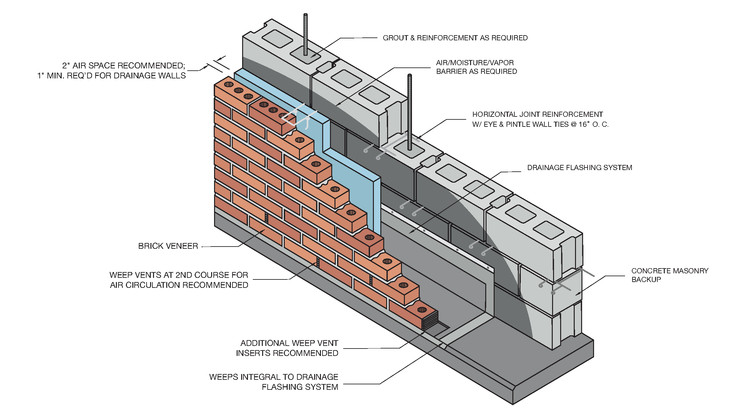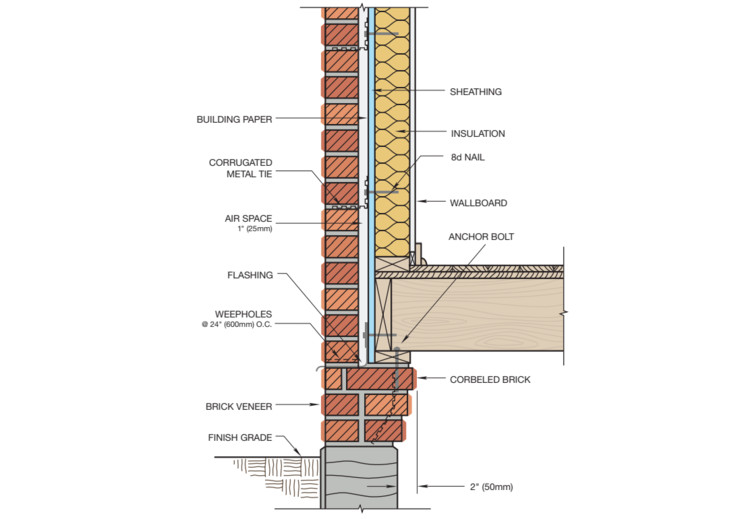
Traditionally, bricks have been used in architecture to fulfill a double function: structural and aesthetic. While they act as an effective and resistant modular solution in building structures, their faces can be exposed to constitute their architectural appearance, generating facades rich in texture and color, thanks to the iron present in the clay they are composed of.
At present, there are products that allow the attractive appearance of bricks to be merged with other structural systems, separating their functions and providing the necessary freedom of design so that the facades can adapt creatively in favor of the conditions of each project and the requirements of its users.
Brick cladding, also called "Face Bricks", can be specified in a large number of colors and textures, and in their summation and variation –thanks to their different shapes and sizes– they can create facades of great complexity and beauty.
Review below a series of didactic details and axonometric brick cladding created by our partner Endicott.

Chimmey Cap Details

Typical Foundation Details



Fire Resistant

Chimmey Cap Details

Chimmey Cap Details

Typical Lintel Details


Typical Jamb Details


Typical Sill Details


Typical Eave Details


Applied brick claddings
Bruce C. Bolling Municipal Building / Mecanoo + Sasaki Associates

La Géode / ADHOC architectes

Four51 Marlborough / Hacin + Associates

Moody Center for the Arts / Michael Maltzan Architecture
.jpg?1559700096)
Find more projects using brick cladding here.


